If you’re planning to remodel your RV and wondering how cabinets are attached to the walls, then you’ve come to the right place! In this article, we’ll discuss everything you need to know about attaching RV cabinets to the walls.
Table of Contents
Types of RV Cabinets
Integral Cabinets
Integral, or built-in, RV cabinets are made from the same material as the walls and can be mounted directly to them. This type of cabinet is ideal for RVs that have a uniform wall structure with few to no obstructions, so they look seamless after installation. [2]
Framed Cabinets
If your RV walls have obstructions, or if you want to add more cabinets than originally planned by the manufacturer, then using framed cabinets is a great option. Framed cabinets are made out of wood and other materials like plastic and metal. These cabinets can be attached to the wall via screws, nails, bolts, adhesive tape, etc., and can be easily customized to fit any space. [2]
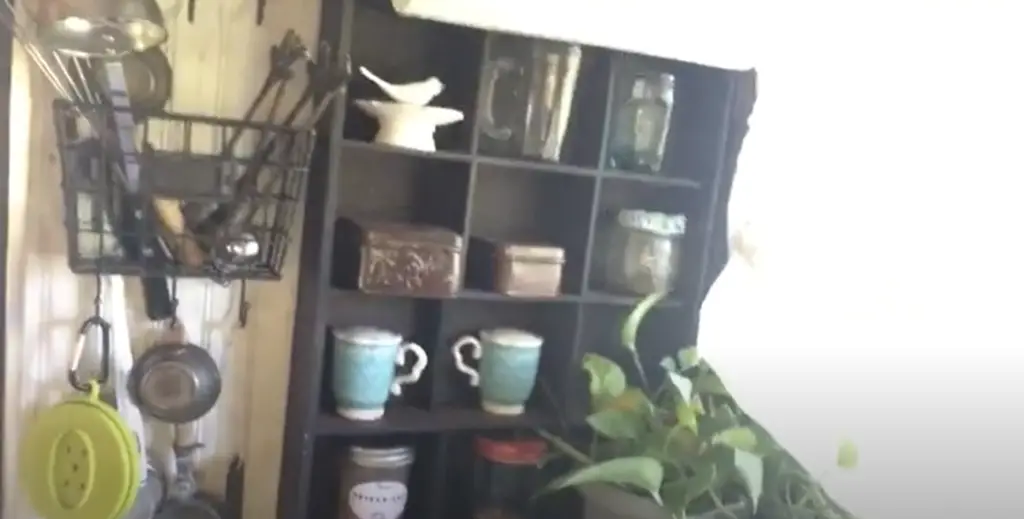
Idealize the proper RV structure
Depending on the type of material used, there are three general ways to attach RV cabinets to your walls. The following is a quick review of each:
- Screws and Bolts: This is probably the most common way to secure RV cabinets. To do this, you’ll need screws or bolts that are long enough to penetrate the wall and reach the frame of your cabinet. Make sure you use proper-sized screws, as using longer ones could cause damage to your RV interior.
- Adhesives: Adhesives such as Liquid Nails or Gorilla Glue are often used to attach cabinets in RVs. This is typically done in conjunction with screws and bolts as a way to reinforce the bond between the cabinet and wall.
- Rivets: Rivets are a great option for mounting cabinetry in RVs. This method, which uses metal pins and small pieces of material called rivets, is very strong and durable. Riveting requires specialized tools, such as a pneumatic riveting tool or hand-held riveter. [1]
Make a Sketch of the RV cabinet
Before starting, it is important to make a sketch of the RV cabinet. This will help you visualize how the cabinets are attached and where different components need to go. A simple graph paper or even a piece of cardboard can be used for this. Mark out the locations of existing holes in the wall, position of countertops and floor sockets, and other details. This will serve as a guide for where you need to attach the cabinets and make sure they are securely fastened. [1]
Measurement of the cabinet
Once you have a clear sketch of the RV cabinet, take measurements to ensure that it fits properly. Measure the length and width of the wall space where the cabinet will be attached and compare them with those of the cabinet. If they do not match, then you can adjust your plan accordingly or even purchase a new one that is right-sized. [1]
Mount the upper cabinet
Before we discuss the methods to mount the upper cabinet, make sure you’ve taken the measurements so that it fits perfectly in its allocated space. [1]
Mount the lower cabinet
The lower cabinets should be mounted first when installing the cabinets in your RV. When mounting the cabinet, make sure that it is level and square before attaching it to the wall. To ensure an even installation, mark where each screw needs to go before drilling any holes. Once everything is installed and secured properly with screws, use a sealant to ensure that the screws don’t come loose over time. [1]
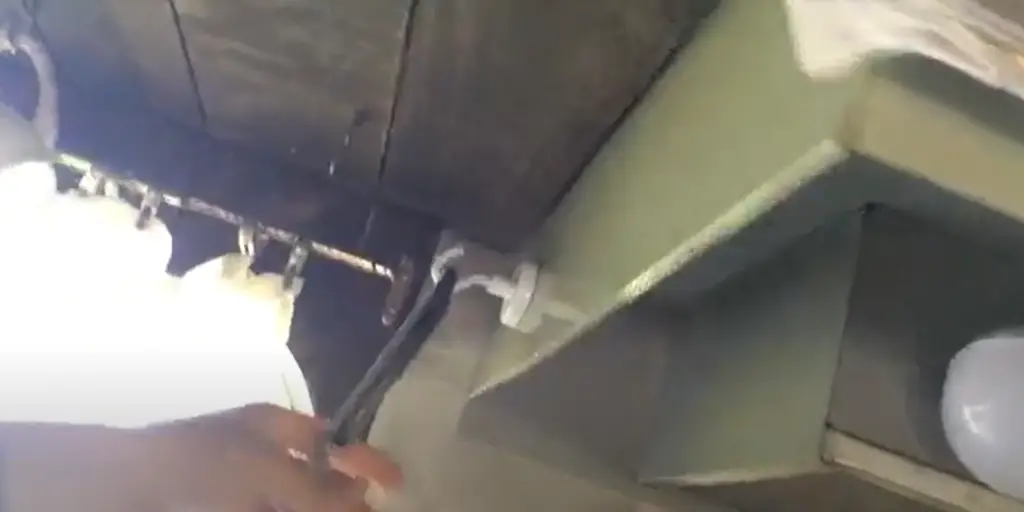
Use bolts and studs
Using bolts and studs to attach your RV cabinet is the most secure way of mounting it. Before beginning this process, make sure you know the size and type of bolt or stud that you need. You can do this by measuring the distance between the walls and finding a suitable bolt or stud that will fit snugly in place. [1]
Use wood glue to attach RV cabinets
Wood glue is an excellent option for RV cabinets, as it can provide a strong bond that will last a long time. It’s important to make sure the surfaces you are attaching the cabinet to are clean and free of debris before applying wood glue. Additionally, apply the glue evenly using a brush or roller along both contact points before you attach the cabinet. Once you’ve secured the cabinet in place, it’s essential to let it dry for at least 24 hours before using it. [1]
Use Expanded and Stainless steel screws
When it comes to attaching your RV cabinets, the most important thing to remember is to use screws. Expanded and stainless steel screws are the best choice for their strength and durability. You should also make sure that when using these types of screws, they are long enough so that they can go through the wall material as well as into the studs of the cabinet. This will provide extra support and help keep your cabinets secure. [1]
Drilling to make a hole
Drilling is one of the most common ways to attach RV cabinets. It’s a simple process that involves drilling a hole in the wall of your RV and then using screws or bolts to secure it. To begin, make sure you have the right drill bit for the job. For metal walls, use a high-speed steel bit; for wood walls, use a tapered drill bit.
Once you have the right drill bit, it’s time to start drilling. Make sure you are careful and not too aggressive when drilling—you don’t want to damage your RV walls. Start at one corner of the cabinet and work your way around until all four screws or bolts are secure. [1]
West epoxy system
The West epoxy system is one of the most popular options for RV cabinets. This system requires two parts—an epoxy resin and a hardener—which are mixed together to form a strong adhesive that firmly binds the cabinet to the wall. The mixture needs to be applied in thin layers, allowing it to dry between each application. Once the adhesive has completely dried and cured, the cabinet should be securely attached to the wall. [1]
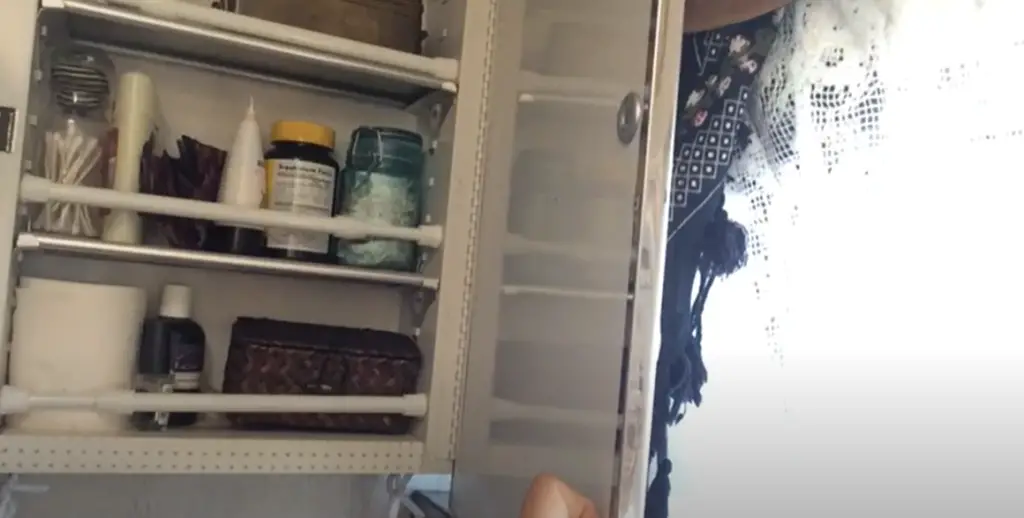
Through rivets
RV cabinets are typically attached to the walls of your recreational vehicle through rivets. Rivets are small metal fasteners with a flat head on one end and a protruding shaft on the other. To attach the cabinets to your RV, all you need is a rivet gun and some rivets. Make sure that you choose the right type and size of rivet for the job. [1]
Use Bondo glass filler
Bondo glass filler is a great way to ensure that your cabinets are securely attached to the walls of your RV. You can use it to fill in any gaps between the wall and cabinet, as well as around nails or screws. This will help create a strong bond that won’t come loose over time. To apply Bondo glass filler, simply spread it over the area you want to fill and then smooth it out before letting it dry. Once dry, you can sand it down until it is perfectly flush with your RV’s wall. This will ensure a strong bond that won’t come loose anytime soon! [1]
Vacuum-bonded walls
One of the most popular methods for attaching RV cabinetry is vacuum-bonded walls. In this method, a sheet of material, such as vinyl or plywood, is adhered to the wall with the use of high pressure and heat. This creates a strong bond between the material and wall and, as such, provides an excellent foundation for the cabinetry. Vacuum-bonded walls are easier to clean, stain or paint, and provide increased insulation as well. [1]
Re-insulate after bonding
Once the cabinets are attached to the walls, you should re-insulate any area that has been exposed due to the installation. Re-insulating will not only protect against temperature loss and soundproofing but also reduces vibrations while driving. After insulation is complete, feel free to start adding hardware like hinges, screws, and brackets. [1]
Attach the cabinets to the floor
The next step in this process is to attach the cabinets to the floor. This can be done using a variety of methods, such as screws, nails, or brackets. You’ll need to make sure you choose the best option for your RV and its specific flooring type – some types of wood are better suited for screws, and some are better suited for nails.
Once the cabinets are securely attached to the floor, you’ll need to make sure that they’re securely attached to each other as well. This will create a strong and stable structure that won’t easily come apart or move around when driving. To do this, you can use screws, brackets, or even adhesive. Make sure to use the right type of screws or nails for your specific materials – stainless steel is a good option for most RV cabinets.
Finally, you’ll need to attach the cabinets to the walls of your RV. This can be done with either screws or brackets. For best results, make sure that the screws or brackets are firmly attached to the wall and will not be easily dislodged. If you’re not sure which type of hardware to use, consult a professional who can advise you on the best option for your RV. [1]
What Material Are RV Cabinets Made Of?
Oak
RV cabinets are typically made of oak, a strong and durable hardwood. Oak is known for its strength and durability, making it the perfect choice for an RV cabinet. The grain of oak makes it suitable for finishing in a variety of ways, from clean white to dark wood finishes. [2]
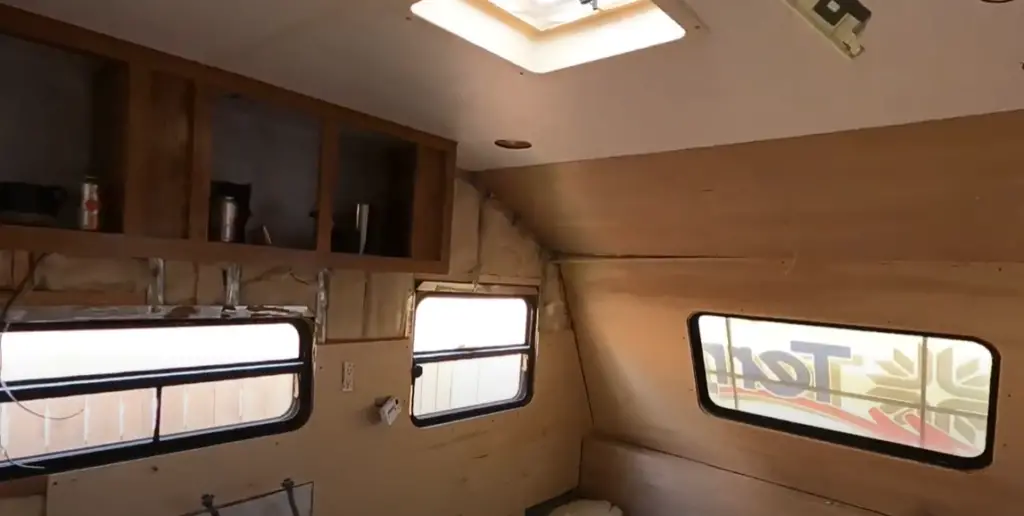
Pine
Pine is also a popular choice for RV cabinets, though it is not as strong and durable as oak. Pine has a soft grain and can be finished in lighter stains or painted to create a classic country feel. [2]
Hickory
Hickory is another option for RV cabinets. It is a strong and durable hardwood, but it has more of a pronounced grain than oak or pine. Hickory can be finished in a range of colors, from light to dark browns and reds. [2]
Cherry
Cherry is a popular choice for RV cabinets. It has a rich, deep color and is softer than other hardwoods. Cherry can be finished in light to dark hues, giving it an attractive look. [2]
Maple
Maple is a very popular option for RV cabinets. It has a smooth grain and can be finished in lighter stains or painted to give it a classic look. Maple is strong and durable, making it an ideal choice for RV cabinets. [2]
Tips for Securing the RV Cabinets
Use Screws
Using screws is the most reliable way to secure your cabinets to the walls of your RV. Be sure you are using screws that are long enough for the thickness of your wall, plus a few extra millimeters for a secure hold. When installing the screws, be sure to pre-drill holes in the wall so that you don’t damage the inner insulation. [2]
L-Brackets
Another way to secure cabinets in your RV is by using L-brackets. Using brackets will ensure that the cabinet stays firmly attached to the wall, as they are designed to distribute weight evenly. When installing an L-bracket, measure twice and drill once to make sure everything lines up correctly. [2]
Cabinet Latches
In addition to screws and brackets, you can also install cabinet latches to secure the cabinets in your RV. Cabinet latches come in an array of designs, from simple push-button varieties to more elaborate models with knobs or handles. Be sure to use stainless steel hardware when installing any type of latch, as this will ensure that it holds up against the elements. [2]
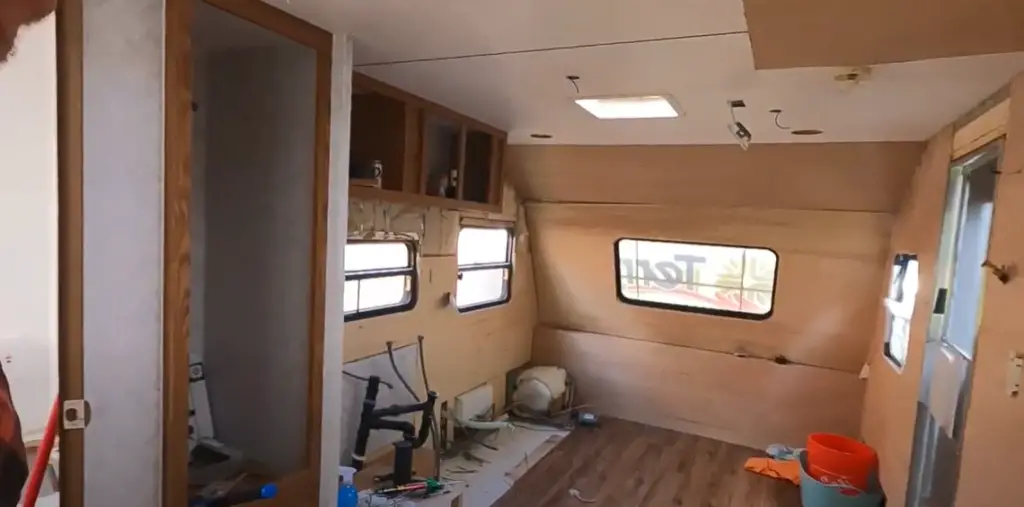
FAQ
How are cabinets connected to the wall?
There are several ways to attach cabinets and other pieces of furniture to the walls in your RV. The most common method is by using screws and brackets. This allows for easy adjustability as needed and ensures a secure connection with minimal visible hardware. You can also use adhesive products like double-sided tape or Velcro, which help reduce vibration and rattling. However, depending on the weight of the cabinets and their contents, these may not provide enough security for long-term use.
How do you remove RV cabinets?
Removing RV cabinets is a relatively straightforward process. Start by unscrewing the mounting screws or brackets from the wall, then gently pull away the cabinet. If you had used adhesive products like double-sided tape or Velcro to attach it, you may need to use a putty knife or other tool to loosen them before you can remove the cabinet. After that, you should be able to pull it away from the wall. Make sure you don’t damage any wires or pipes in the process!
Can I put regular cabinets in an RV?
Yes, you can put regular cabinets in an RV, although they may need to be modified to fit the space and layout of your vehicle. You should also take into account any additional weight that the cabinetry will add to your RV. It’s important to make sure all of your furniture is securely attached to the walls or floors and that it won’t hinder your ability to move around. Additionally, you may need to reinforce the walls of your RV if they are not strong enough to hold the cabinets and their contents.
How do RV cabinets stay closed?
Most RV cabinets have magnetic door catches or spring latches that keep the doors shut when they are not in use. If your cabinet does not already have these, you can easily install them yourself. This will help ensure that your belongings remain secure and out of sight while you’re on the road. Additionally, adding a locking mechanism to the doors will provide extra security if needed.
Are RV walls structural?
RV walls generally consist of a thin layer of aluminum or plywood, which is then covered with a material like vinyl or fiberglass. This outer layer makes the walls lightweight and easy to move around, but it also means they are not as strong as regular residential walls. It’s important to be aware that any furniture you install should be securely fastened to the walls or floors so that it won’t become a safety hazard in the event of an accident.
Can you screw into RV walls?
Yes, you can screw into RV walls, though it’s important to make sure the screws go into a stud or other secure part of the wall. It’s also a good idea to use wood screws instead of regular metal ones, as these will usually provide better results and less likelihood of damaging the wall material. Additionally, you should be aware that the type of wall material you’re using may require different types of screws, so be sure to check with an RV expert before beginning your project.
What are RV walls framed with?
RV walls are typically framed with lightweight aluminum or steel, which is then covered with a thin layer of plywood and finished with some type of surface material. This allows for easy customization in terms of size, shape, and materials used, but it also means that the walls are not as strong as traditional residential construction. It’s important to make sure any furniture or cabinets you install are securely attached to the walls and floors, as they may become a safety hazard if they come loose in the event of an accident.
Why do RV walls delaminate?
RV walls can delaminate for a number of reasons, including improper installation, water damage, and age. When these thin layers of material start to separate from each other, the wall may become weak and susceptible to further damage. This can lead to problems such as rot or mold growth, so it’s important to inspect your RV walls regularly and have any delamination issues repaired as soon as possible.
Useful Video: How to remove RV cabinets
Conclusion
Installing RV cabinets is a straightforward DIY project. It’s important to take your time and follow the steps we’ve outlined in this article so you get it right the first time. Be sure to use the proper tools, fasteners, and adhesive products for better results. You can find a wide variety of cabinet hardware, mounting plates, and fasteners in hardware stores.
Remember to measure twice before drilling holes and only use the correct drill bits for your RV walls. If you’re unsure of what type of mounting system is right for your RV, contact a professional or check out our installation guide. With the right materials and tools, you can have your cabinets securely attached in no time. Thanks for reading!
References:
- https://trucksauthority.com/how-are-rv-cabinets-attached-to-the-walls/
- https://lodgescout.com/travel-trailer-cabinets/

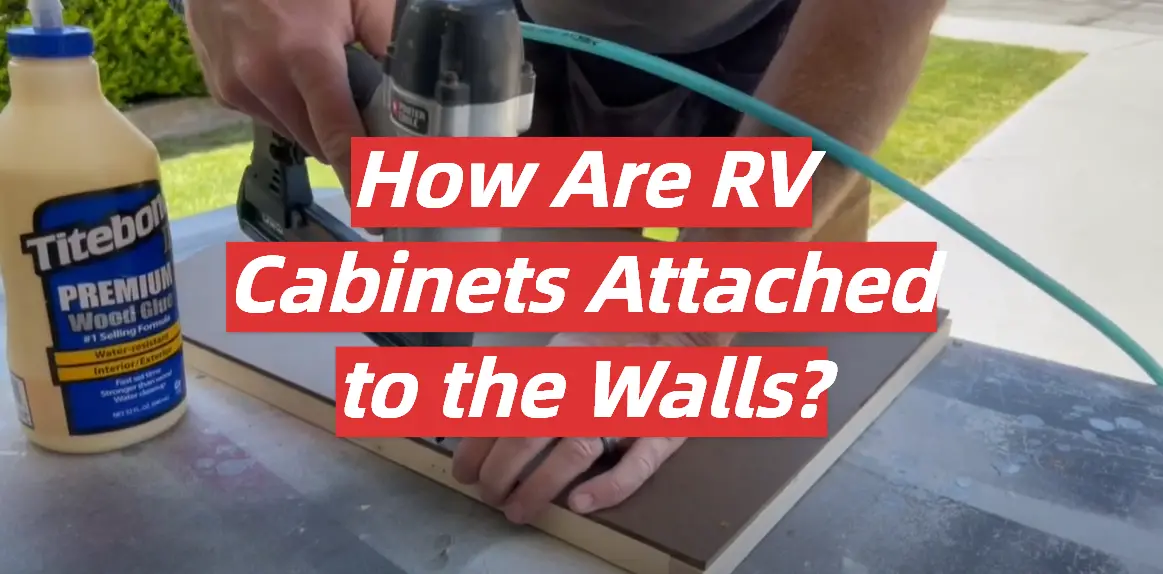




Leave a Reply